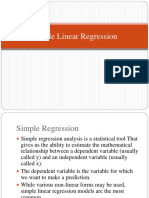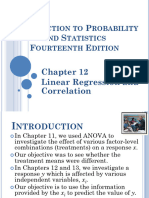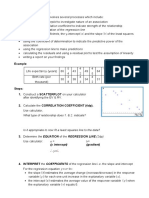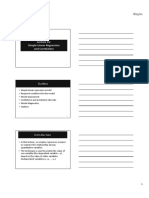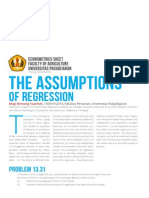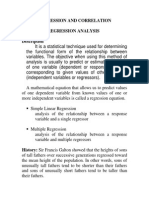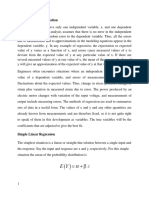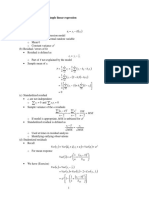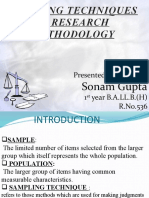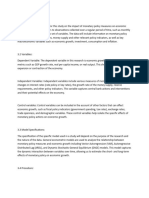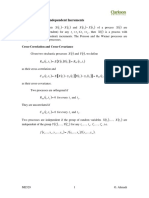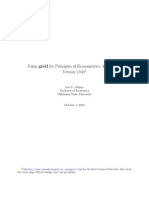0% found this document useful (0 votes)
24 views27 pagesC6 Regression
The document provides an overview of linear regression analysis, including key concepts such as covariance, correlation coefficients, and the regression line equation. It explains the purpose of regression analysis for description, control, and prediction, and details the process of estimating regression coefficients using the least squares method. Additionally, it discusses the importance of residuals, standard error, and the use of ANOVA for comparing group means.
Uploaded by
SankarCopyright
© © All Rights Reserved
We take content rights seriously. If you suspect this is your content, claim it here.
Available Formats
Download as PDF, TXT or read online on Scribd
0% found this document useful (0 votes)
24 views27 pagesC6 Regression
The document provides an overview of linear regression analysis, including key concepts such as covariance, correlation coefficients, and the regression line equation. It explains the purpose of regression analysis for description, control, and prediction, and details the process of estimating regression coefficients using the least squares method. Additionally, it discusses the importance of residuals, standard error, and the use of ANOVA for comparing group means.
Uploaded by
SankarCopyright
© © All Rights Reserved
We take content rights seriously. If you suspect this is your content, claim it here.
Available Formats
Download as PDF, TXT or read online on Scribd
/ 27


